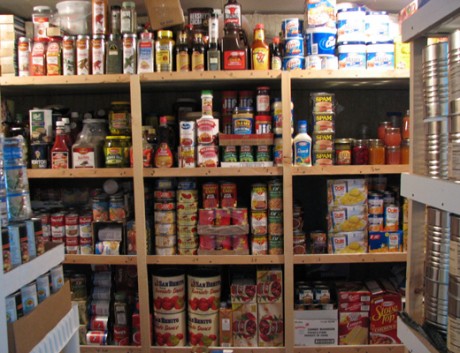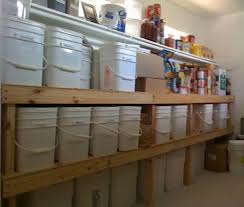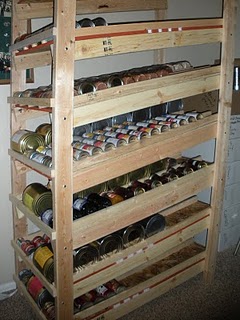Food Storage Guidelines to Insure You Get the Most Out of Your Food Storage
You can find plenty of food storage guidelines and tips to help you reach your goals, especially if you are just beginning to build up a stockpile of food for an emergency, . Making sure you have plenty of food is one of the most important things you can do for yourself and your family in the event of an emergency situation. Following storage guidelines can help you ensure that you have plentiful and nutritious food.
Keep the Temperature Low and Consistent

Ideally, you will need to store your food in a place with a temperature between 40 and 70 degrees. The closer you can get to the lower end of that spectrum, the longer your food will last. If the temperature gets much below that, most of your canned and jarred food will freeze, but if the temperature gets higher your food will begin to lose nutritional value and possibly color.
You should also try to keep the temperature as steady as possible. Large fluctuations in temperature may cause food to go bad more quickly. With this in mind, storing your food in a shed, barn, garage, or other area that is not climate controlled is probably not the best idea. The best place based on food storage guidelines is indoors in an air-conditioned and heated room, a basement, or a root cellar.
Eliminate Light, Oxygen and Moisture

Light, oxygen and moisture all cause stored food to deteriorate and either spoil or just lose some nutritional value. Getting rid of or at least lessening these factors can be very helpful and is an important part of setting up a stockpile of food.
Oxygen, while not always bad for food in itself, is bad because of what it helps grow. Oxygen allows pests, bacteria, and various other microorganisms to grow and thrive in your food storage. To fix this and make your food fit food storage guidelines, you can buy oxygen absorbers, which eliminate the oxygen in your food containers and leave only nitrogen, which does not affect the food.
Exposing your food to light for long periods of time is the easiest way to deplete your food of its essential nutrients. If your food is exposed to too much light, your food will not taste as good, look as good or be as nutritious as it would normally be. The best way to deal with this is to store your food in a place with no windows or get some heavy curtains if you do have windows.
Food storage guidelines dictate that you should avoid moisture as much as possible when storing food for an emergency. Humidity and moisture in the air causes your food to degrade more quickly and encourages mold growth. In order to keep out the moisture, you will need to make sure you package everything correctly. Popular options include vacuum seal bags, sealed mason jars, and Mylar bags.
Basically, making sure there is no moisture in your container and then sealing it will keep your food fresh for a longer period of time. Your goal should be to keep the food at a maximum of 15% humidity and lower than that if possible.
Food Storage Guidelines and Rotating

Many people suggest rotating your stored foods to make sure that you have fresh, edible food available at all times. Basically, you should gradually build up your stockpile and then once items have been there for a long period of time, you should use and replace them.
That way, you have experience using them and know how you can fit them into your recipes and you don’t run the danger of discovering your food has gone bad in the middle of an emergency situation. Rotating and checking up on your food supply is one of the most important things you can do.
Food storage guidelines can help you stockpile food to use in the event of an emergency. They provide ideas on how to store food so that you get the maximum nutritional value and shelf life as well as how to maintain your storage. Once you get the hang of food storage, you will enjoy the peace of mind it brings.
Return from Food Storage Guidelines to Survival Food





New! Comments
Have your say about what you just read! Leave me a comment in the box below.